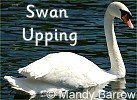Drought in EnglandEngland is presently experiencing a drought. The current hot dry weather has led to a drop in river flows, reservoirs and groundwater levels.
Last month, just 0.6in of rain fell in the London area – just 27 per cent of the average. South-east England has received just over a third of average rainfall. Eastern England has been dry with just 9 mm (19% of average) of rain falling so far in July. South-west England have received over 40 per cent of the monthly average.
Eight water companies companies across south-east England have a full hosepipe and sprinkler ban in place. Nearly 13 million people must not use a hosepipe to wash their cars or water their gardens.
Thames Water’s reservoirs that supply London have remained at about 90 per cent full. A third of all rivers in England and Wales having lower than average levels of water.
The River ThamesA lawyer who is attempting to
swim the length of the Thames said there was not enough water to begin at its source. He had to run 20 miles before finding water deep enough to swim in.
This is very different from April 2006 when we took photos of the Thames from its source to sea.
The amount of water flowing over Teddington Weir has also dropped dramatically. The daily torrent of 178million gallons falling to just 44million gallons in times of drought.
 This year’s annual census of the swan population on the Thames took place in record temperatures. The colourful and unique ceremony is among the oldest of Royal traditions and is carried out in traditional boats and costumes, dating back to medieval times.
This year’s annual census of the swan population on the Thames took place in record temperatures. The colourful and unique ceremony is among the oldest of Royal traditions and is carried out in traditional boats and costumes, dating back to medieval times.